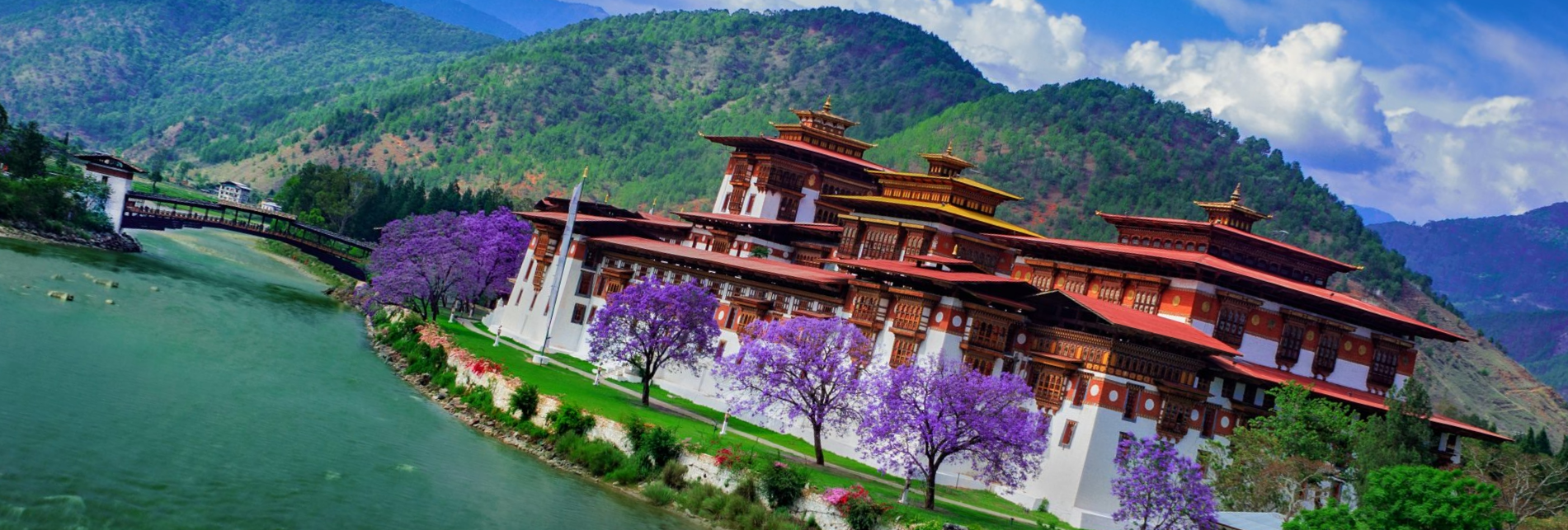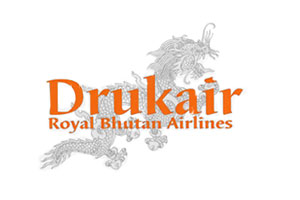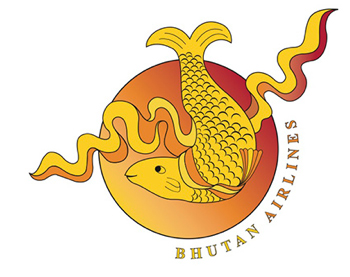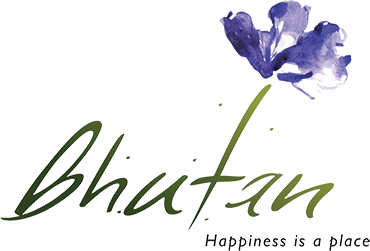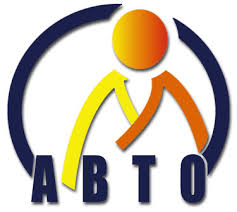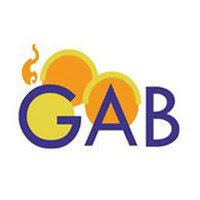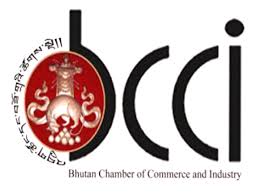Western Bhutan
The western circuit comprises of the six western Districts in the country that includes Thimphu, Paro, Haa, Wangdue Phodrang, Punakha and Gasa. What makes this circuit special is that the Tourism Council of Bhutan has categorized new ways of exploring the existing great sights.
In this circuit, you can attend the summer festival of Haa and delve into the wonders of the ancient living culture of the Haaps (People from Haa). The festival highlights Shamanic rituals and other folk dances. You may also enjoy the beauty of rare Himalayan flowers in bloom or take a daring trek to Nob Tsonapatra, immersing you in the interesting legends of the area.
In Thimphu, you can witness the newly introduced Takin Festival, MICE & GNH conferences, meditation and wellness facilities. You can also visit temples, Dzongs (fortresses) and museums or attend a textile festival that brings to life the rich culture of Bhutanese weaving.
You’ll marvel at the historical depiction of medieval Bhutanese warriors who defended Bhutan with swords and shields during the Punakha Drupchen/festival. The various festivals are scheduled throughout the year and trips can be tailored in accordance.
Experience the plantation of rice in early summer or the harvests of the same in autumn. The golden hue of ripening rice fields is a photographers’ delight in autumn. Western Bhutan is home to some of the country’s finest museums, and you’ll not want to miss the opportunity to learn about our storied history and traditional culture. Paro museum (Taa dzong), displays hundreds of artifacts revealing the history and culture of Bhutan, In Thimphu, let the Folk Heritage museum enthuse you with an in-depth look into a typical farmers’ livelihood.
Paro
Elevation 2280m.
Attractions:
Paro Dzong
Ta Dzong the National Museum
Drukgyel Dzong
Paro Taktsang
Kyichu Lhakhang (temple with permit)
Dungtse Lhakhang (temple with permit)
Paro valley is a living cultural center. In spring thousands of families gather at Paro to celebrate the Paro Tsechu, a found day of religious festival mask dances and entertainment.
The Paro Dzong controls all the secular and religious activities in the valley. Behind Paro Dzong, on the high hillside is the castle-shaped Taa Dzong (Bhutan’s National Museum since 1967) which houses the nation’s heritage.
The ruins of the Drugyal Dzong, at the northern end of the valley, offer a view of the Jumolhari Peak. The Bhutanese repelled several invading Tibetan armies during the 17th century from this location. Other places of interests in Paro are temples like Dungtse Lhakhang, Kyichu Lhakhang, and Taktsang.
Thimphu
Elevation 2320m.
Attractions:
Visit Trashichhodzong, built as the symbol of the Capital.
Spectacular views of Thimphu valley from the Telecoms Tower
Exploring the shops along Norzin Lam, Thimphuís main street.
A hike up to either Tango or Cheri Monastery.
The weekend market (farmer’s market).
Memorial Chorten
School of Arts and Crafts
National Library
National Institute of Traditional Medicine
Zangto Pelri Lhakhang (Temple)
Mini Zoo to see the National Animal of Bhutan ‘TAKIN’
Changangkha Lhakhang (Temple)
Handicraft markets.
Thimphu has been the Capital of Bhutan since 1955 and lies at an altitude of about 7,600 ft.
Once a small rural settlement, today it is home to about 100,000 people. Bhutan’s administrative and religious center Tashichhodzong on the banks of the Wang Chu houses the throne room of His Majesty the King of Bhutan, Government Ministries, the nation’s largest monastery, and headquarters of His Holiness the Je Khenpo (Head of the Monastic Body). The National Assembly hall is located in a new building across the river. Next to the Dzong is Bhutan’s only golf course.
Bhutan’s National Library, National Textile Museum, Folk Heritage Museum, Institute of Zorig Chosum, National Memorial Chorten, Simtokha Dzong, Changangkha Lhakhang, National Institute of Traditional Medicine, and Zangtopelri are other places of interest in Thimphu.
Punakha
Elevation 1250m.
Attractions:
Punakha Dzong
Khamsum Yuelley Temple
Chimmi Lhakhang
Punakha is a two hours’ drive from Thimphu, and the route is over the spectacular Himalayas at Dochula pass at 10,500 feet.
Punakha served as the capital of Bhutan till 1955 and is one of the most fertile valleys in Bhutan, abundant with crops and vast terraces of rice fields.
Chimmi Lhakhang located on a hillock among the rice fields is a pilgrimage site for childless couples. The temple is associated with the famous saint Drukpa Kuenley who built a Temple on the site.
Punakha Dzong is the home to the central monk body and His Holiness the Je Khenpo during winter months. The Dzong also preserves the embalmed body of Zhabdrung Ngawang Namgyel and sacred artifacts.
Wangdue Phodrang
Attractions:
Wangduephodrang Dzong
Gangteng Valley
Wangduephodrang is the last town on the highway before entering Central Bhutan.
The Wangdue Dzong is perched on a spur at the confluence of two rivers. The position of the Dzong completely covers the spur and commands an impressive view over both the north-south and east-west roads.
In the 17th century, Wangduephodrang played a critical role in unifying the western central and southern Bhutanese districts.
Our top Tours in Western Bhutan
Western Bhutan Cultural Tour
Beautiful Glimpse of Bhutan
Bhutan Cultural Experience
Journey across Bhutan
Drukpath Trek
Jhomolhari Trek
Dagala Thousand Lakes Trek
Gangtey Trek
Samtengang Winter Trek
Snowman Trek
Bumdra Trek
Thimphu Tsechu
Paro Tsechu
Gasa Tsechu
Punakha Tsechu

